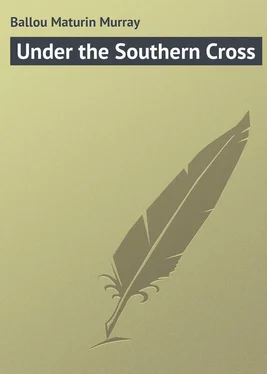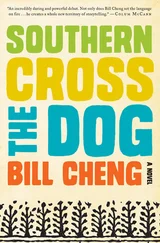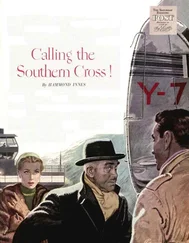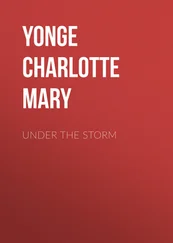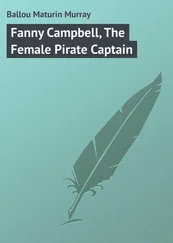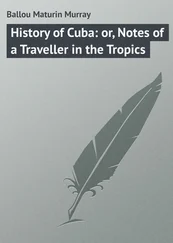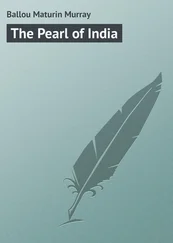Maturin Ballou - Under the Southern Cross
Здесь есть возможность читать онлайн «Maturin Ballou - Under the Southern Cross» — ознакомительный отрывок электронной книги совершенно бесплатно, а после прочтения отрывка купить полную версию. В некоторых случаях можно слушать аудио, скачать через торрент в формате fb2 и присутствует краткое содержание. Жанр: foreign_prose, Путешествия и география, на английском языке. Описание произведения, (предисловие) а так же отзывы посетителей доступны на портале библиотеки ЛибКат.
- Название:Under the Southern Cross
- Автор:
- Жанр:
- Год:неизвестен
- ISBN:нет данных
- Рейтинг книги:3 / 5. Голосов: 1
-
Избранное:Добавить в избранное
- Отзывы:
-
Ваша оценка:
- 60
- 1
- 2
- 3
- 4
- 5
Under the Southern Cross: краткое содержание, описание и аннотация
Предлагаем к чтению аннотацию, описание, краткое содержание или предисловие (зависит от того, что написал сам автор книги «Under the Southern Cross»). Если вы не нашли необходимую информацию о книге — напишите в комментариях, мы постараемся отыскать её.
Under the Southern Cross — читать онлайн ознакомительный отрывок
Ниже представлен текст книги, разбитый по страницам. Система сохранения места последней прочитанной страницы, позволяет с удобством читать онлайн бесплатно книгу «Under the Southern Cross», без необходимости каждый раз заново искать на чём Вы остановились. Поставьте закладку, и сможете в любой момент перейти на страницу, на которой закончили чтение.
Интервал:
Закладка:
We made the island of Oahu, passing along the windward shores of Maui and Molokai in the early gray of a soft June morning, and doubling the lofty promontory known as Diamond Head, which rears its precipitous front seven hundred feet above the sea. We ran along the coast while the sun rose and beautified the mountain-tops, the green slopes, gulches, and fern-clad hills sparkling with streamlets. The dawn was lovely in its aspect, fresh and sweet. A gentle land-breeze brought us the dewy fragrance of the flowers which had been distilled from a wilderness of bloom during the tropical night. The uncertain light melted slowly away as a dainty flush appeared in the east. A few transparent clouds hung over the verdant isle, clouds so fleecy and ermine-like that they might have been the mantles of angels. It was entrancing thus to be gliding noiselessly over a perfectly calm sea, with so many attendant elements of beauty. We stood quite alone in the bow of the ship, wondering how the passengers below could court the thrall of sleep at such a moment.
As we drew nearer and nearer to the shore, sugar plantations, cocoanut groves, and verdant pastures came clearly into view, dotted here and there with the low primitive dwellings of the natives, and occasionally ornamented by the picturesque, vine-covered cottages of American and European residents. As the city of Honolulu was approached, it seemed to be half buried in a cloud of luxuriant foliage. Blessed with frequent rains, drought is not known here, and the verdure is perennial.
The sudden change of the color of the ocean was very noticeable as we steamed at half speed through a narrow gap of the coral reef which forms a natural breakwater to the harbor. We passed the light-house which stands on the inner edge of the reef, – a structure not over thirty feet in height, consequently not visible from a ship's deck more than ten miles away. The captain informed us that it was the only light between this island and the coast of New Zealand, in the far South Pacific. The channel through the reef to safe anchorage is carefully buoyed on either side, and at night a safety-lantern is placed upon each of these little floating beacons, so that a steamer can easily steer her course in safety, come when she may.
Though the volcanic origin of the land is plain, it is not the sole cause of these reefs and islands appearing thus in mid-ocean. Upon the flanks of the upheaval the coral insect with tireless industry rears its amazing structure, until it reaches the surface of the waves as a reef, more or less contiguous to the shore, and to which ages finally serve to join it. The tiny creature delegated by Providence to build these reefs dies on exposure to air, – its work being then done. The far-reaching antiquity of the islands is established by these very coralline formations, which could only have attained their present elevation just below the surface by the growth of thousands of years. As already intimated, the land rises so abruptly from the bottom of the sea that the water retains its dark-blue tint to within a short distance of the shore, where it assumes a light-blue and bottle-green hue, with other magic colors striking in their effect viewed beneath the clear morning light and embossed with the rays of the glowing sun.
We were soon safely moored inside the harbor, where there is an average depth of sixteen fathoms, and room for a hundred large vessels to find anchorage at the same time. The wharves are spacious and most substantially built, with ample depth alongside. Honolulu, which is situated on the south side of the island, is the commercial port of the whole group, – the half-way house, as it were, between North America and Asia, California and the New World of Australasia.
The streets of the Anglo-Hawaiian capital are clean and all admirably macadamized, the material employed for the purpose being coral, black lava, stone, and sand. At night the thoroughfares are rendered nearly as light as by day, through the liberal use of gas. One of the first things to attract our attention after landing was a huge steam-rolling machine at work upon the road-bed of one of the streets leading to the wharves. The city, with its twenty thousand inhabitants more or less, has all the belongings of modern civilization, such as churches, charitable institutions, hospitals, schools, gas, electric lights, and the telephone; yet it was forced upon the mind how brief the period that had transpired since this was nearly a wilderness, peopled by a race of cannibals, whose idolatrous superstitions involved frequent human sacrifices. To-day nearly all the rising generation can read and write, and the entire race are professed Christians. One fact especially indicative of progress came to our knowledge; namely, that the government expends fifty thousand dollars annually upon the local schools. Could a stronger contrast be found than the aspect presented by Honolulu when Captain Cook discovered these islands, in 1778, and that of the Honolulu of 1888? In imagination we find ourself trying to look forward to the close of another century, and surmising what may then be the condition of these isolated spots of earth.
The original paganism of this people was of the most brutal type, revelling in human gore. We were told of rows of stone altars on which a hundred victims are known to have been sacrificed at one time, the altars still standing as memorials of the wretched idolatrous worship of the past. Such scenes were of frequent occurrence among the aborigines, surrounded by a climate which was nearly perfect, and by a profuseness and bounty of vegetation that made the support of life a mere holiday existence. They poured out human blood like water upon the altars erected to their idols, and fattened upon human flesh. It is strange indeed that some of the most lovely parts of the world should have been peopled by cannibals. We speak in the past tense; but all travellers in savage, half-civilized lands know that there are many waste places of the earth which are to-day the abode of the anthropophagi.
In those early days the several islands of the Hawaiian group had each a separate king. Bitter wars were frequent among them, and the savages of the Pacific islands always ate their prisoners taken in battle. King Kamehameha finally subjected the several isles to his sway, and founded the government which has lasted to our day.
Many of the streets of Honolulu present a grateful shade along the sidewalks, being lined by choice ornamental trees, of which the cocoanut, palm, bread-fruit, candle-nut, and some others are indigenous; but many have been introduced from abroad and become thoroughly domesticated. The tall mango-tree with its rich, glossy leaves, the branches bending under the weight of its delicious fruit, was seen growing everywhere, though it is not a native of these islands. It was impossible not to observe with acute interest the great variety of fruit-trees, most of whose pendulous branches were heavy with luscious products. Among them were the feathery tamarind, the orange, lime, alligator-pear, citron-fig, date, palm, rose-apple, and some others whose names we did not learn. Of all the flowering trees the brilliant Ponciana regia was most conspicuous and attractive, with its cloud of scarlet blossoms, each cluster as large as a Florida orange.
Some of the thoroughfares, especially that known as King's Street, are lined by pretty, low-built cottages, standing a hundred feet and more back from the roadway, with broad, inviting verandas, the whole front festooned and nearly hidden by tropical and semi-tropical plants in full bloom. This delightful aspect was supplemented by lovely flower-beds, and groups of ornamental trees in the gardens, with here and there an isolated Norfolk Island pine, forcing its strong individuality of shape and foliage upon the observation. A China rose-tree full of crimson flowers was noticed, and in a garden near the palace we saw a peach-tree, with one side full of rosy blossoms, while the other was decked with ripening fruit. How this was achieved we did not stop to inquire, pausing only long enough to admire the novel and anomalous effect. The gardens of Honolulu do not lack for water, a never-failing supply of the precious liquid being brought from the neighboring mountains in large iron pipes, and introduced into each city dwelling; moreover, we were told by the residents that they have only to sink a well ten or twelve feet deep anywhere on the plateau occupied by the city, when an abundance of water can always be secured. It was delightful to think that this lovely floral display to be seen all about us, around the native shanties as well as in the grounds of the better classes, was not confined to any one season, but that the various months of the year were severally beautified with roses, lilies, and the thousand and one gems of Flora's kingdom grown out-of-doors.
Читать дальшеИнтервал:
Закладка:
Похожие книги на «Under the Southern Cross»
Представляем Вашему вниманию похожие книги на «Under the Southern Cross» списком для выбора. Мы отобрали схожую по названию и смыслу литературу в надежде предоставить читателям больше вариантов отыскать новые, интересные, ещё непрочитанные произведения.
Обсуждение, отзывы о книге «Under the Southern Cross» и просто собственные мнения читателей. Оставьте ваши комментарии, напишите, что Вы думаете о произведении, его смысле или главных героях. Укажите что конкретно понравилось, а что нет, и почему Вы так считаете.
